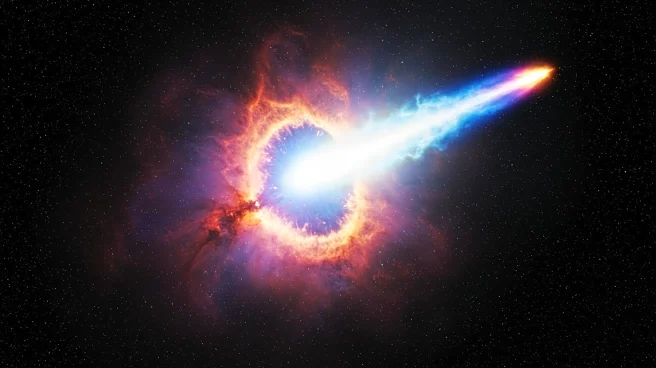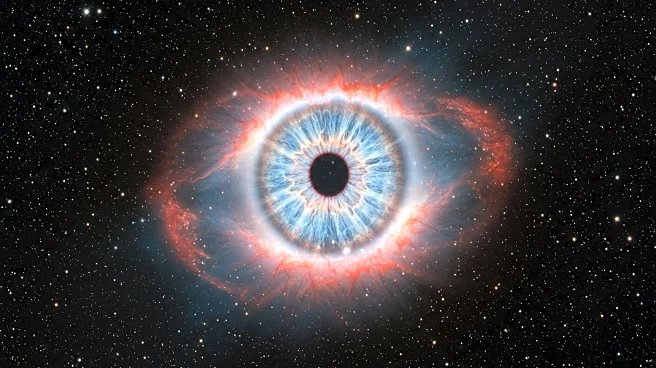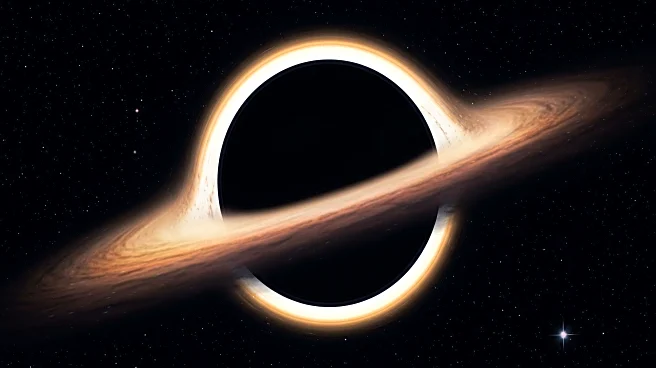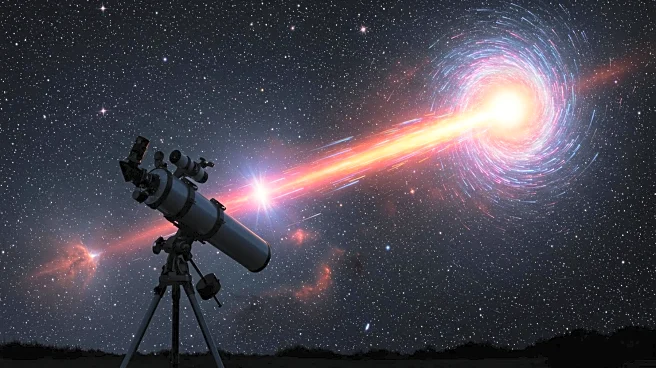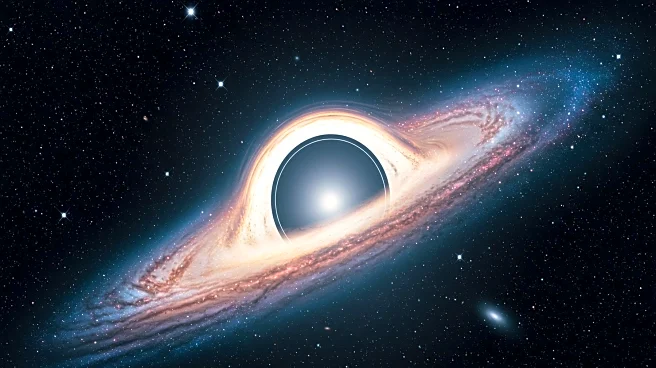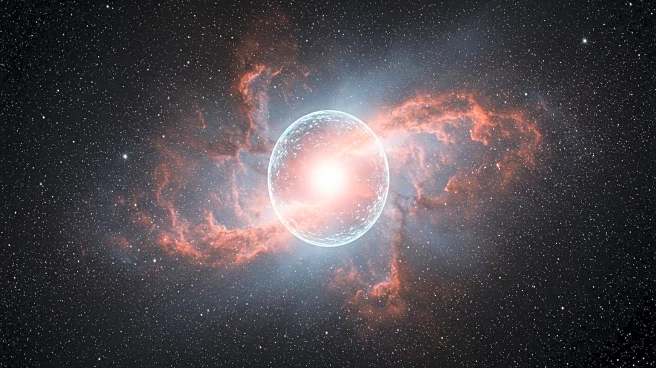What is the story about?
What's Happening?
Astronomers have captured a striking image of a blazar, PKS 1424+240, which is shooting a high-energy jet directly at Earth. This image, dubbed the 'Eye of Sauron,' was compiled over 15 years using data from the National Radio Astronomy Observatory's Very Long Baseline Array. The blazar, located billions of light-years away, is a type of quasar with a supermassive black hole at its center, emitting powerful energy jets. These jets, aligned almost perfectly with Earth, contain high concentrations of gamma rays and X-rays, making them appear brighter than most quasars. The study, published in Astronomy and Astrophysics, provides insights into the magnetic fields within these jets and the origin of neutrinos, elusive particles that rarely interact with matter.
Why It's Important?
The discovery of the 'Eye of Sauron' blazar jet is significant for understanding the universe's high-energy phenomena and the behavior of neutrinos. Neutrinos are abundant yet difficult to study due to their minimal interaction with matter. This research offers a glimpse into the mechanisms that accelerate protons to become neutrinos, potentially advancing our knowledge of particle physics. Additionally, the alignment of the blazar's jet with Earth amplifies its emissions, providing a unique opportunity to study these cosmic events. The findings could lead to further exploration of similar jets, enhancing our understanding of the universe's energetic processes.
What's Next?
Further observations of similar blazar jets are necessary to unravel the mechanisms behind neutrino production. Researchers aim to conduct more studies to confirm the findings and explore other blazars with similar alignments. This could lead to new insights into the behavior of neutrinos and the role of magnetic fields in high-energy cosmic events. The ongoing research may also contribute to the development of new technologies for detecting and analyzing neutrinos, potentially impacting fields such as astrophysics and particle physics.
AI Generated Content
Do you find this article useful?
